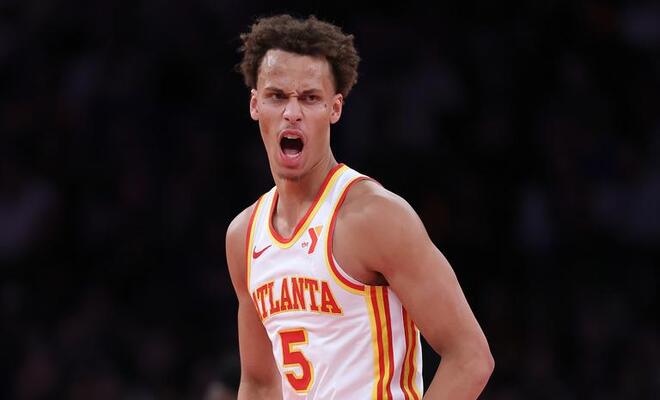-
 October 11, 2025, 2:21 am
October 11, 2025, 2:21 amLast Updated on October 11, 2025 2:21 am by Keston Paul | Published: October 11, 2025
It’s an annual tradition for the best of the best fantasy basketball analysts and personalities to gather and play the game we love so much, in a season-long battle for honor and bragging rights. It’s 30 Deep, a 30-team league stuffed with the biggest names in the industry and three-time champion (in eight seasons), and our managing editor, Mike Passador is here to offer up some trips and tricks for managers about to embark on deep-league drafts.
Deep leagues are incredibly fun, and I don’t just say that because of last season’s results. Most managers are playing in leagues with 10 or 12 teams, but those of you going into larger formats are signing up for a different beast. It’s for the NBA obsessives out there who know their stuff from top to bottom, who pan over box scores and remember the random names that never get mentioned on TV. As the guy who does all of the Draft Guide player profiles (all 540-plus), it’s right up my alley. So how do you win those leagues?
I’m definitely more of a “boring” fantasy GM than a wheeler-and-dealer. I tend to trust my draft rather than constantly shuffle the roster around, though your opportunities to do so are increasingly limited as your league size increases anyway. There’s maybe two or three waiver pickups that make a tangible difference; everyone else is just a short-term replacement for teams that are crunched by injuries. Extremely deep leagues are really the only ones where you can win the whole thing on draft day — you need some luck (and I was undoubtedly a bit lucky, as all winners are whether they want to admit it or not) — but assembling a strong roster gives you a massive leg up on the competition given the more limited avenues to get back into the hunt. Trades for anything other than fringe contributors are extremely difficult to pull off given the outsized role that early picks play in a roster’s direction, and the barrenness of the waiver wire makes two-for-ones hard to construct.
These tips will be written from the perspective of someone playing a 30-teamer but you can scale the insight up or down as necessary; some things won’t be quite as essential in 16-team leagues, but the principles all hold when your player pool starts to include some extremely limited fantasy contributors. Your mileage may vary but these are some guiding philosophies when I enter the draft room. With that in mind, here are a few scattered thoughts that have helped me pick up a pair of big wins.
As a bonus, we’ll look at last season’s draft day group and the final winning roster… at the end of the article.
It’s Going to be Weird
In standard leagues you can generally predict the first two or three rounds of the draft; everyone knows what the deal is and managers will often sit down at the table with an ideal start in mind. You have good odds of getting the pair or trio you want to build around if you set reasonable expectations. That’s not the case in deeper formats, and especially in 30-team behemoths. Pre-planning a pair as your roster foundation is a fool’s errand; it’s more hope than plan.
As far as the Good Players are concerned, you’re going to have one shot to draft them. Just one. If you’re picking between LaMelo Ball and Chet Holmgren, you’d better make your mind up because the other guy is not making it back to you. Unless you’re in the last three or four picks of the first round, there’s no need to get your hopes up about a perfect set of back-to-back selections. As a result, you can expect managers to go way off the board to get the guys that they really believe in. I will not put anyone on blast but there have been shocking picks, even inside the top-10, in previous seasons. If you want a player, you need to be active in making sure you get them. That means that managers are going to be picking way off the board in some cases. You will look at your draft results and see at least a dozen picks that make you scratch your head, and all with real players who are getting universally drafted in shallow leagues.
And it’s totally defensible! Fantasy basketball is supposed to be fun, so if there’s a player you want to be attached to, go for it. We love that passion but sometimes it makes for a very difficult road to victory.
Third-Round Reversal
If your league has more than 20 teams, you definitely need to do third-round reversal. The draft order flips in the third round, so the person who has No. 1 overall in a 30-team snake draft would end up with pick Nos. 1, 60 and 90 instead of 1, 60 and 61 in a draft without third-round reversal. That seems like a pretty big gap but that manager already has a massive head start on the poor soul who goes at No. 30, as they would pick at 30, 31 and 90 in a traditional draft. There’s no way they can hang with the manager at No. 1 without some good fortune, but with picks 30, 31 and 60 you can build a very solid team that has a puncher’s chance. It’s good for competitive balance; without it, managers picking outside the top-20 are basically playing with ankle weights on.
The Value Will be There
To get the entire blueprint for Deep Leagues, you’ll need to have an Ethos 360, All-Sport or NBA FantasyPass membership. Click here to learn more and sign up! Premium Access Required
📢 Want More? 📢
🏠 Go to the Draft Guide Home Page Here
 Join our Discord: Click Here to Join!
Join our Discord: Click Here to Join!📡 Download the SportsEthos App from your app store to get real-time alerts and updates
Get the SportsEthos App (iOS App Store) Get the SportsEthos App (Google Play)
 Follow us on Twitter: @EthosFantasyNBA
Follow us on Twitter: @EthosFantasyNBA🏆 Join our premium community built on integrity, competition, and winning. Let’s crush this season together.
Get the NBA FantasyPass!Join the SportsEthos team! Fill out an application by clicking here!
